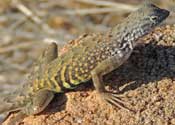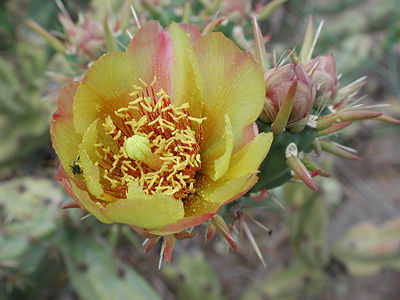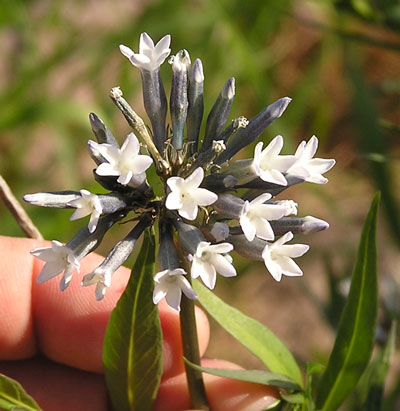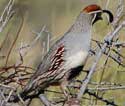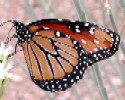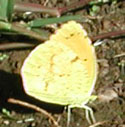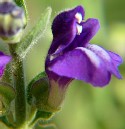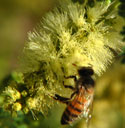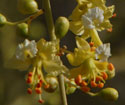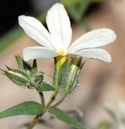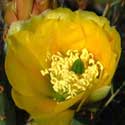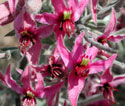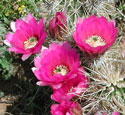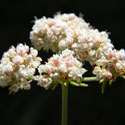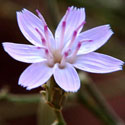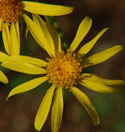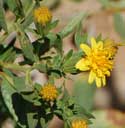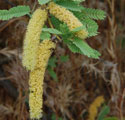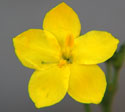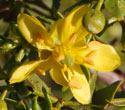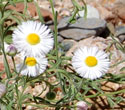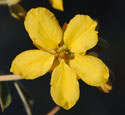One of the easiest Superstition Wilderness access points to get to from the greater Phoenix area is First Water Trail, just north of Apache Junction. From Phoenix drive east on US-60 (Superstiton Freeway) and exit at Idaho Road and go north to the junction with Apache Trail. Drive about 5¼ miles northeast then turn right (east) onto the first forest road beyond Lost Dutchman State Park - clearly signed for access to the First Water Trail. A shorth three-mile drive on a usually well-graded gravel road brings you to the trailhead parking area. On several visits I found an active fee pay station so bring a few dollars just in case.
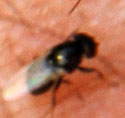 I hiked in on May 3, 2009 and found many spring
wildflowers still in bloom and many butterflies on the wing. The main
detraction, however, were the abundant
eye gnats. These insects do not bite, yet are very annoying as they
work to enter hikers' eyes, ears and nose!
I hiked in on May 3, 2009 and found many spring
wildflowers still in bloom and many butterflies on the wing. The main
detraction, however, were the abundant
eye gnats. These insects do not bite, yet are very annoying as they
work to enter hikers' eyes, ears and nose!
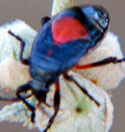
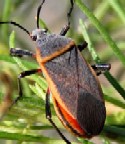
Bordered
Plant Bugs (Largus sp.) The most abundant blooms were those of
woody shrubs and trees. With few exceptions herbaceous plants were near the end
of their blooming season and were setting seed. Upon many varieties of plants
such as mesquites, desert globe mallow and brittlebush I found adults and
nymphs of feeding upon the developing fruits/seeds. The nymphs of bordered
plant bugs are metalic blue with an orange diamond mark at the center of their
dorsum. Adult, far left, and nymph (immature stage) left, are shown.
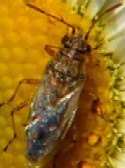 The abundance of seeds on May 3rd were
also being fed upon by
Nysius bugs. Virtually every flower head of fleabane (look
like small daisies) had several of the small bugs present. Nysius use
there proboscises to suck out the contents of the developing seeds.
The abundance of seeds on May 3rd were
also being fed upon by
Nysius bugs. Virtually every flower head of fleabane (look
like small daisies) had several of the small bugs present. Nysius use
there proboscises to suck out the contents of the developing seeds.
In early May, day time temperatures can climb well above 30° C and this makes life very appealing for reptiles such as snakes and lizards. The Greater Earless Lizard (image and link at right) emerged around 10 AM to bask in the warm sun. They can run with surprising speed and seem to taunt the potential adversery with their boldly black-and-white banded tail.
The trekker symbol at center indicates location of the First Water trailhead. Nearby areas of interest for nature are Lost Dutchman State Park (HQ icon) and the Boulder Creek and Peralta trails (green trekker icons). Superstition Mountains in a larger map
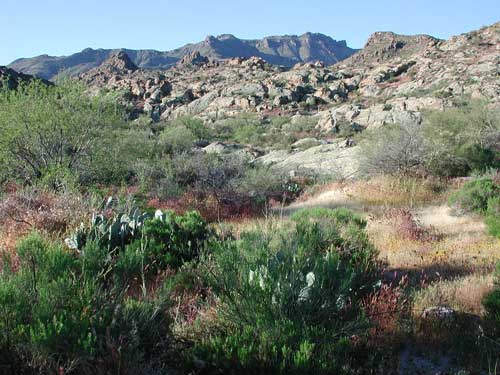
In this view along the First Water Trail the dark green shrubs at forefront are Turpentine Bush and just behind them Prickly Pear Cactus are visible. The reddish grass is Red Brome Grass, an exotic invasive that promotes range fires.
